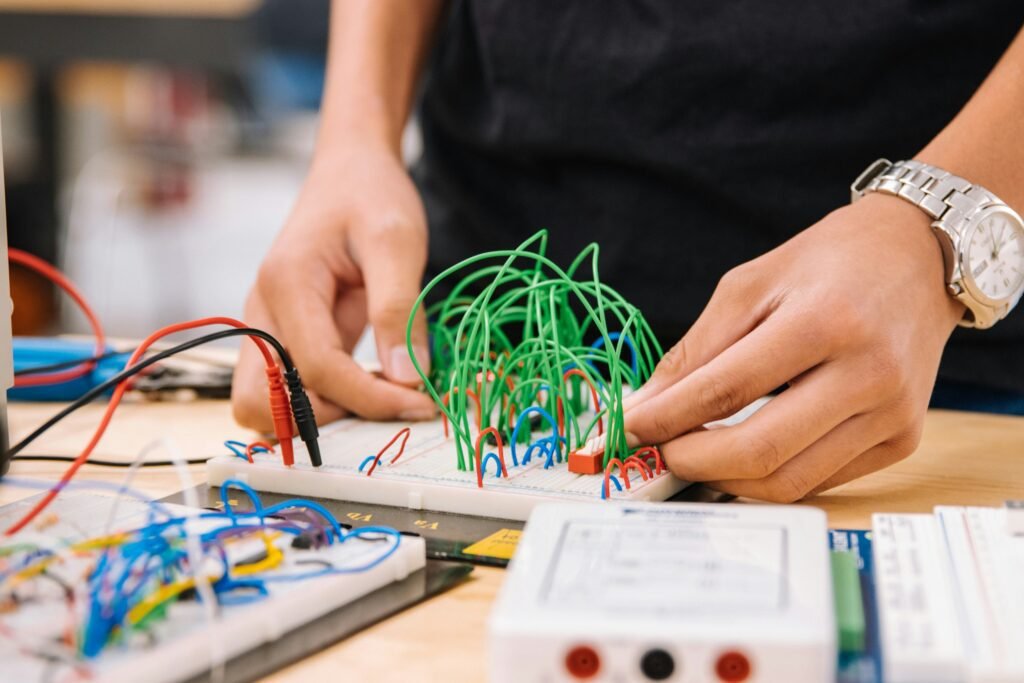In this article, I show you how to study STEM courses effectively.
If you’re looking for better ways to study STEM courses, you’ve come to the right place.
#1 Practice Practice Practice
To do well on Math, Science, and Engineering tests, you need to practice.
Just doing the assignments is not enough practice to get good grades on a test.
So what does practice look like?
It is NOT just reading the textbook, skimming through notes, or reviewing problem solutions.
You MUST practice by actually solving problems.
You need to take out a pen and paper and write out the solutions to problems.
Think of it this way.
If you were racing a marathon, you would practice by running.
The same goes for studying for STEM courses.
In the test you are going to be solving problems, so you should practice by doing the same thing.
#2 Pick The Right Problems
So now we know that we need to be solving problems, but what problems should you study?
Your goal here is to do as many problems as possible.
Step 1: Questions With Full Solutions
Start with questions that have full solutions, that way if you get stuck, you can check the solutions to move forward.
The way to do this is with questions that have video solutions.
Check out my University Physics Videos and STEM Practice Problems with Solutions.
Step 2: Questions With Answers But No Solutions
Once you have solved problems with solutions and you are feeling confident, you can move on to questions that have answers but no solutions.
These are a good way to see if you are ready.
Should I Try Questions That Don’t Have Answers Or Solutions?
Sometimes teachers will give you questions to practice for the test that don’t have answers or solutions.
These are tricky because there is usually no way to tell if you got them right.
Often times teachers are giving you these problems because they will be very similar to the questions on the test.
So the best way to deal with these is to find problems with solutions or answers that are very similar.
That way you can practice questions that will be similar to what’s on the test AND be able to check your answers.
An Important Point To Remember
Keep in mind that you should do questions which are within the scope of the course.
There is not much point in studying things that will not be on the test.
If you’re not sure, ask your teacher to clearly define the scope o
#3 Use Your Formula Sheet
Your formula sheet is a valuable resource.
Make sure you use it right!
How to Use The Formula Sheet You Were Given
If you were given a formula sheet for the test, use it!
There are often other equations in the textbook, but you won’t have access to those on the test.
Get familiar with the equations on your formula sheet by using it when you study.
How to Create The Best Formula Sheet
If you are allowed to bring in your own formula sheet, make a good one!
This should be the last thing you do.
Once you have finished solving problems, go back and highlight all the equations that you used.
Put those highlighted equations on your formula sheet.
That way you are only including equations that you actually need.
After that, go through the notes and your textbook to make sure that you didn’t miss anything.
Check with other students too, make sure that you have all the same equations.
Make sure to check with your teacher to confirm what you are allowed to write on your formula sheet.
#4 Study Your Teacher
Studying your teacher is as important as studying the content.
Your teaching is the one writing and marking the test.
You need to understand how your teacher thinks.
Pay attention in class to the topics that the teacher gets excited about.
That will give you hints as to what might be on the test.
Learn your teacher’s style.
Do they like multiple-choice, short-answer, or long-answer questions?
Do they like analytical, theoretical, or application questions?
This will give you a better idea of how to study for your STEM test.

Matt Heywood
Matt Heywood is the founder of Heywood Academies, a tutoring company for STEM students, and a Physics Instructional Assistant at Camosun College.
His simple and effective approach to learning has helped over 140 students in Science, Math, and Engineering.
You can find Matt on Instagram, Facebook, Linked In, and YouTube.
